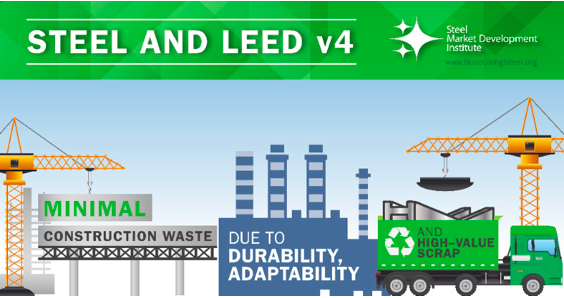Reuse and Adaptability

From both a resiliency and sustainability perspective, it makes sense to construct buildings meant to last and remain in service for their full economic lives. Ideally, those buildings should also be adaptable to avoid functional obsolescence and extend their economic life when occupant demands shift. Steel has a number of inherent advantages in adaptability when compared to other building materials due to its light weight and flexibility.
- Steel framing systems can be readily and economically adapted to cope with the changing requirements of occupants, avoiding functional obsolescence and the high cost and disruption of refurbishment, redevelopment or demolition.
- Steel-framed buildings are among the most adaptable and flexible assets in which an owner can invest. Steel framing offers design benefits such as longer spans, larger bays and wider frame spacing, providing architects more creative opportunities than wood or concrete construction. This allows for maximized usable floor space and large interior spaces that can be adapted to cope with the changing requirements of occupants. The creation of light, open, airy spaces make the building ideal for modernization, reconfiguring, extending or re-purposing with minimal disruption, and without costly and sometimes harmful demolition and redevelopment.
- The ability to reuse products is another important factor in material decision-making. In some cases, steel buildings are already partially deconstructed when structural steel components, such as wide flange beams, are removed undamaged from one building and used on a new project. Other steel building systems can be completely deconstructed and re-built elsewhere. Steel components such as cladding and staircases often find new uses if extracted undamaged.
- Design for deconstruction can also make a property more appealing as an investment opportunity, since it becomes more flexible for adaptation and the cost of material disposal at the end of the building life is reduced, while the value of components is increased.
- Where concrete and masonry construction are not usually conducive to modifications, cold-formed steel framed partitions and structural steel framing members can easily be removed, reused or recycled during building modifications. Steel's light weight and flexibility are benefits few other materials can match for this purpose.